The Orientalist painting collection of the Islamic Arts Museum Malaysia (IAMM) is among the world’s largest. The IAMM is a pioneer institution of the Islamic world, reclaiming a heritage that reveals much about relations between ‘East’ and ‘West’. This is an art movement that has regained much of its previous popularity but is rarely seen in Asia. An Orientalist painting is more than a work of art; it is also an insight into people and places from another era. The collection was about what the artists might have seen, rather than what they never could. It was about their reactions to the Islamic world.

The paintings were mainly from the 19th century, a time when it became possible for artists to travel to the ‘Orient’, as the Middle East and North Africa were then called. The exhibition took a thematic look at that vast region in a time of transition. The display was divided into eight sections that follow the artists’ different creative callings. As this was one of the largest exhibitions ever undertaken at the IAMM, it was displayed over two galleries. We started here with the largest category: Places.
We followed a path that started in the Maghreb and Al-Andalus. This was the main gateway that led European artists and other visitors into the Islamic world. The cultures they found have straddled Europe, Africa and Asia for centuries.
Orientalist artists have left us with invaluable observations of locations within the Islamic world. Monochrome photography was the only rival to their efforts. To visualise how places used to be, most viewers would prefer to see some colour. The paintings in this section set the scene for the rest of the exhibition. Meticulously executed and carefully composed, they offer us a glimpse of places that mostly still exist. They depict known locations – either mentioned in the painting’s title or clearly identifiable. In many cases a premium was paid when collectors knew exactly what they were getting. Most preferred reality to fantasy.







